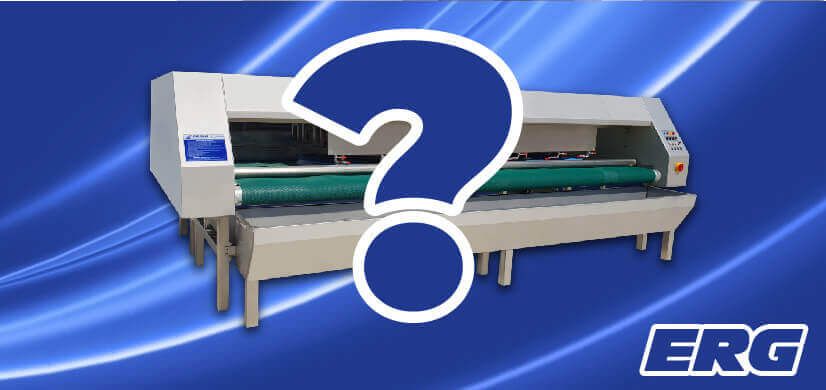
- What is the electricity consumption of the machine?
Accurately measuring the electricity consumption of our carpet washing machines is challenging for several reasons:
- Fully automatic operation: Not all machine systems run simultaneously. They only activate when a carpet is present.
- Variable run time and consumption: Several factors influence the machine’s operating time and energy use, including:
- Carpet soil level: Heavily soiled carpets require longer cleaning cycles.
- Carpet size: Larger carpets take more time and energy to clean.
- Cleaning chemicals: Different chemicals have varying effects on cleaning.
- Water quality: Hard water may require additional purification for effective cleaning.
- Conveyor belt speed: Operator-chosen speed setting affects energy consumption.
- What is the machine’s maximum cleaning output per hour?
Many of the same variables that affect electricity consumption also influence capacity, including:
- Carpet soil level: Heavier soiled carpets require longer cleaning times, impacting hourly capacity.
- Conveyor belt speed: While your machines offer adjustable speeds, choosing the fastest setting isn’t always optimal for heavily soiled carpets.
To illustrate, let’s consider the following scenario:
- Maximum carpet width: 3 meters
- Carpet size: 3 meters to 4 meters
- Belt speed: 1 meter per minute
- Number of brushes: 4+4=8 disc brushes
- Carpet type: Average soiled, machine-made synthetic carpet
In this scenario, we estimate an hourly capacity of approximately 180 square meters.
- What is the water consumption of the machine?
Our machines boast high water efficiency thanks to a powerful pressurizer, using only 15-17 liters per minute. Additionally, the automatic rinsing system operates efficiently, avoiding unnecessary water usage.
- What type of building do you recommend?
Minimum requirements:
- Floor space: 100 square meters (includes space for machines and operations)
- Electricity: Three-phase power
- Water supply: City infrastructure or underground well
- Air compressor: 100 liters capacity
- Water tank: 300 liters capacity
- Shampoo mixing tank: 100 liters capacity
Recommended requirements:
- Floor space: 250 square meters (increases efficiency and flexibility)
- Air compressor: 150 liters capacity (provides extra power for other equipments)
- Water tank: 2 tons capacity (ensures sufficient water for longer usage)
- Shampoo mixing tank: 1 ton capacity (reduces refilling frequency)
Note: These are general recommendations. Your specific needs may vary depending on your business plan and expected volume.
- How much is the shipping cost?
To estimate your shipping cost, please provide us with:
- Your full address
- The name of the nearest commercial port
Please note that the shipping cost estimate we offer is approximate and might differ at the actual time of shipment.
- I should buy the biggest machine so I can wash all the sizes. Right?
It might seem tempting to buy the biggest carpet washing machines to handle any size, but that’s not always the best strategy.
Here’s why:
- Focus on your typical customer: Analyze the carpets you usually clean, like those of friends, family, or past customers. If you mainly serve residential areas, most carpets will be smaller.
- Research popular sizes: Consult carpet suppliers or stores to learn the most common sizes and types customers demand.
- Target specific markets: If you plan to serve hotels or offices, directly contact them to understand their needs.
For example, in Izmir, Turkey, owning a massive 4 meter maximum carpet width model machine wouldn’t be practical. Carpet sizes rarely exceed 9 square meters, and you would only encounter a few of those each month. Smaller carpets, like 3, 4, and 6 square meters, along with runners, are much more common.
By choosing the right machine size based on your target market and typical needs, you’ll save money and avoid unnecessary resources.
- How much is the carpet washing machine?
Before we talk about price, we need to understand what you need. Different machines have different capabilities and, therefore, different costs. We offer 5 main models, each with varying conveyor belt sizes. Additionally, some models have further variations called submodels. Plus, you can choose optional features to customize your machine.
To ensure you get the best value, consider these key factors:
- Conveyor belt width: This determines the maximum width of carpets your machine can handle. Think about the most common carpet sizes you expect to clean.
- Number of brushes: While 3+3=6 brushes might work for smaller machines (up to 2 meter maximum carpet width model), larger machines typically need more brushes for faster cleaning.
Once you have a better idea of your needs, we can provide specific pricing and model recommendations. Feel free to ask any questions you may have!
- What makes a machine good quality?
If you’re looking for a good-quality carpet washing machine, you need to pay attention to the following:
- Chassis material, bolts, nuts, bearings, etc.: All metal components should be 304-grade stainless steel. This grade offers superior corrosion resistance compared to 430 or lower grades. Hot-dipped galvanized steel is also inadequate because it’s essentially carbon steel coated in zinc, leading to a short lifespan in this industry.
- Electrical Panel: Opt for globally recognized brands like Mitsubishi, Siemens, or Schneider. Avoid unfamiliar brands, as finding replacement parts and technical support can be difficult, especially for PLC and VFDs.
- Brushes: Aim for at least six brushes (3+3=6). Single-line configurations (3 or 4 brushes) are not recommended due to their limited capacity and cleaning performance. Dual lines (3+3=6, 4+4=8, or 6+6=12) are optimal.
- Versatility: The programming should accommodate various carpet types, fringed, and different sizes.
- Manufacturer:
Experience: Choose a well-established manufacturer with a proven track record of resolving issues. This ensures better after-sales support and expertise.
References: The company should readily provide references showcasing satisfied customers worldwide.
English Support: Ensure the company offers English after-sales support, as some companies only offer English for sales, not technical assistance.